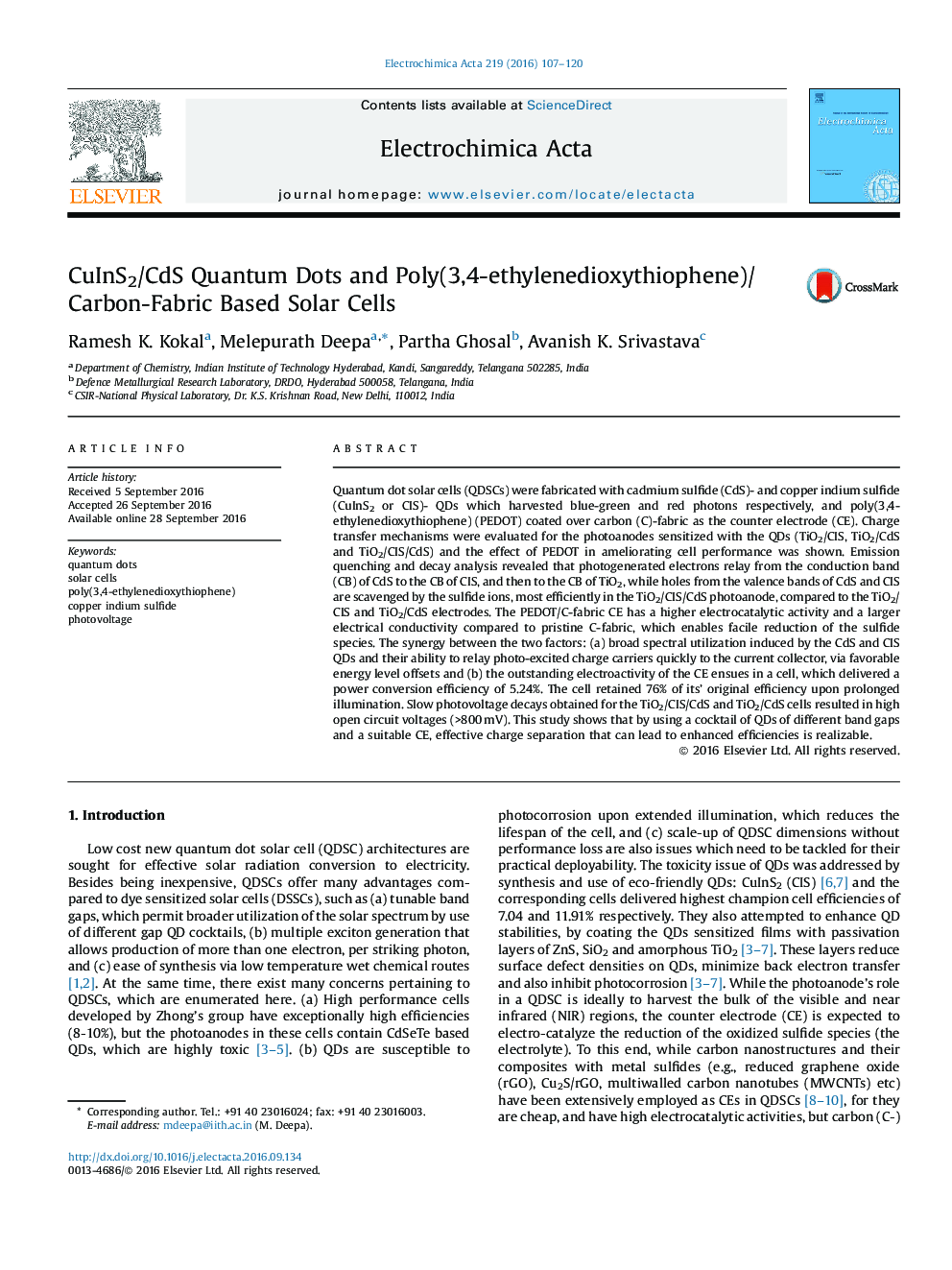| کد مقاله | کد نشریه | سال انتشار | مقاله انگلیسی | نسخه تمام متن |
|---|---|---|---|---|
| 6472867 | 1424138 | 2016 | 14 صفحه PDF | دانلود رایگان |

- Quantum dot solar cells fabricated with CuInS2 (CIS) and CdS nanocrystals.
- Poly(3,4-ethylenedioxythiophene) (PEDOT)/C-fabric used as a counter electrode.
- PEDOT offers a high electrocatalytic activity for polysulfide reduction.
- The TiO2/CIS/CdS cell delivers a power conversion efficiency of 5.24%.
- Slow voltage decay leads to high open circuit voltage in the TiO2/CIS/CdS cell.
Quantum dot solar cells (QDSCs) were fabricated with cadmium sulfide (CdS)- and copper indium sulfide (CuInS2 or CIS)- QDs which harvested blue-green and red photons respectively, and poly(3,4-ethylenedioxythiophene) (PEDOT) coated over carbon (C)-fabric as the counter electrode (CE). Charge transfer mechanisms were evaluated for the photoanodes sensitized with the QDs (TiO2/CIS, TiO2/CdS and TiO2/CIS/CdS) and the effect of PEDOT in ameliorating cell performance was shown. Emission quenching and decay analysis revealed that photogenerated electrons relay from the conduction band (CB) of CdS to the CB of CIS, and then to the CB of TiO2, while holes from the valence bands of CdS and CIS are scavenged by the sulfide ions, most efficiently in the TiO2/CIS/CdS photoanode, compared to the TiO2/CIS and TiO2/CdS electrodes. The PEDOT/C-fabric CE has a higher electrocatalytic activity and a larger electrical conductivity compared to pristine C-fabric, which enables facile reduction of the sulfide species. The synergy between the two factors: (a) broad spectral utilization induced by the CdS and CIS QDs and their ability to relay photo-excited charge carriers quickly to the current collector, via favorable energy level offsets and (b) the outstanding electroactivity of the CE ensues in a cell, which delivered a power conversion efficiency of 5.24%. The cell retained 76% of its' original efficiency upon prolonged illumination. Slow photovoltage decays obtained for the TiO2/CIS/CdS and TiO2/CdS cells resulted in high open circuit voltages (>800Â mV). This study shows that by using a cocktail of QDs of different band gaps and a suitable CE, effective charge separation that can lead to enhanced efficiencies is realizable.
201
Journal: Electrochimica Acta - Volume 219, 20 November 2016, Pages 107-120